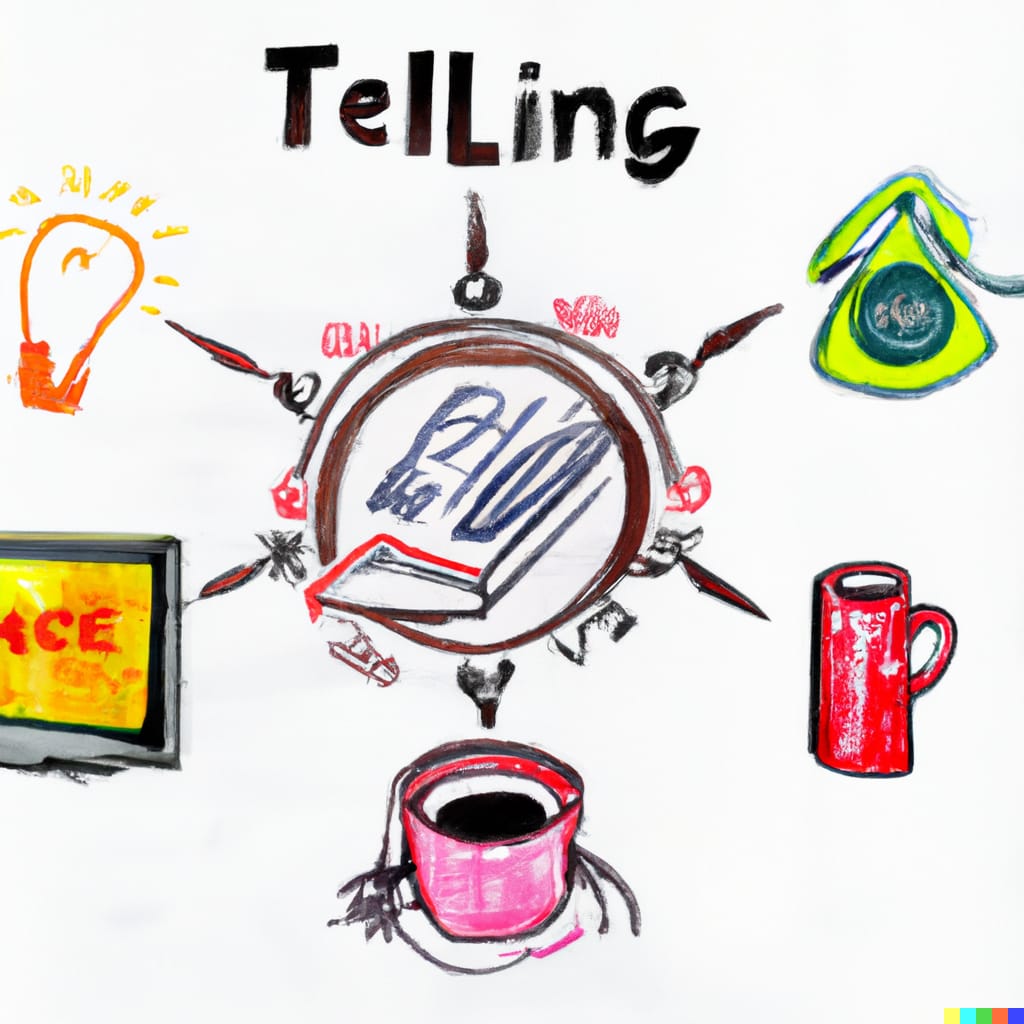Introduction
Ideation, storytelling, and mnemonics are not just words; they are powerful tools that fuel creativity, innovation, and human connection. In a world driven by ideas and constant evolution, understanding these concepts is vital for anyone looking to make an impact. Dive into the world of innovation to discover new ways to transform ideas, and join us on a journey that explores the essence of human creativity.
Ideation: The Birthplace of Ideas
Ideation is the creative process of generating, developing, and communicating new ideas. It’s the birthplace of innovation, where thoughts are nurtured and transformed into tangible solutions. Ideation is not confined to artists or inventors; it’s a skill that can be honed by anyone. Explore MindMeister for digital tools that assist in visualizing and connecting ideas. Read about AI-Powered Virtual Travel to see how technology is shaping creativity.
Techniques for Effective Ideation
- Brainstorming: A group creativity technique where participants focus on generating a large number of ideas. It’s a dynamic process that encourages free thinking and collaboration.
- Mind Mapping: A visual tool that helps structure information, allowing for better analysis and comprehension. It’s a powerful way to connect ideas and see the bigger picture.
- Prototyping: Creating a preliminary version of a product or concept to visualize and test the idea. It’s a hands-on approach that brings ideas to life.
The Importance of Ideation
Ideation is the cornerstone of innovation. It fosters creativity, encourages collaboration, and leads to groundbreaking solutions. Whether in business, education, or personal development, ideation is a skill that can transform the way we think and create.
Storytelling: The Art of Human Connection
Storytelling is an ancient art that transcends cultures and generations. It’s a way to share knowledge, emotions, and values. From campfire tales to modern advertising, storytelling is a universal language that resonates with the human psyche. Learn from experts about the art of storytelling and how it engages audiences. Explore more about creativity and its role in human cognition.
The Power of Storytelling
- Emotional Engagement: Stories evoke emotions, making the content more memorable and relatable. They touch the heart and stay in the mind.
- Brand Identity: Businesses use storytelling to create a brand persona that connects with customers. It’s a way to tell the world who you are and what you stand for.
- Educational Tool: Teachers and trainers use stories to simplify complex concepts, making learning enjoyable and effective.
The Art of Crafting a Story
Crafting a compelling story requires understanding the audience, choosing the right words, and weaving them into a narrative that captivates and inspires. It’s an art that can be mastered with practice, empathy, and creativity.
Mnemonics: Unlocking the Memory Potential
Mnemonics are memory aids that use associations, imagery, and patterns to help remember information. From ancient scholars to modern students, mnemonics have been unlocking the potential of the human memory. Discover the science behind mnemonic devices and how they aid memory retention. Dive into the concept of Lateral Thinking and Solutions for Greener Garbage Management for more insights.
Types of Mnemonics
- Acronyms: Using the first letters of a series of words to create a new word. It’s a simple yet effective way to remember lists and sequences.
- Visual Imagery: Creating vivid mental images to associate with the information. It’s a technique that leverages the brain’s ability to recall images.
- Rhymes and Songs: Utilizing musical patterns and rhymes to enhance recall. It’s a fun and engaging way to memorize facts and figures.
The Impact of Mnemonics
Mnemonics are more than just memory tricks; they are tools that enhance learning, boost retention, and make the process of memorization enjoyable. They are used in education, training, and personal development to achieve better results.
Hands-On Approach: Tactile Creativity
A hands-on approach to capturing ideas involves physical interaction and tactile sensation. It’s about feeling the ideas, not just thinking about them. This method engages multiple senses, leading to a more profound understanding and connection with the subject. Enhance your creativity skills with this workshop on hands-on ideation techniques. Learn about storytelling and its role in shaping narratives.
Benefits of a Hands-On Approach
- Enhanced Learning: Physical interaction deepens comprehension and retention. It’s a multisensory experience that enriches learning.
- Inclusive Creativity: It allows people with different learning styles to participate and contribute. It’s a democratic approach to creativity.
- Real-World Application: Prototyping and physical modeling provide practical insights into how an idea might work in reality. It’s a bridge between theory and practice.
Hands-On Creativity in Action
From art workshops to engineering labs, hands-on creativity is applied across various fields. It’s a way to explore, experiment, and experience ideas in a tangible form. It’s creativity in action.
Conclusion: Embracing the Journey
Ideation, storytelling, and mnemonics offer unique ways to think, create, and remember. They are not isolated concepts but interconnected facets of human intelligence and creativity. By understanding and applying these techniques, we can enhance our ability to innovate, connect, and inspire. The journey of creativity is endless, filled with discoveries, challenges, and joys. Embrace it with an open mind and a willing heart.


3 thoughts on “Ideation and Storytelling, Mnemonics, and More”